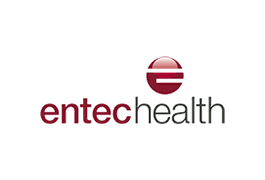20 March, 2020
With the spread of COVID-19 globally, and the huge range of restrictions and social distancing measures placed on people by governments, health organizations, and workplaces, there has never been a greater need for remote working capabilities.
Some organizations are well prepared for this type of scenario and will survive and possibly even thrive under the current restrictions, but many are simply not able to operate without direct contact with their customers, and there are others who could operate remotely but are woefully underprepared.
This is true for healthcare too, there are some who are better setup to work remotely than others. Telehealth is not a new concept in health care, but its uptake in many health fields has been slow. For some, this is due to the cost associated with many telehealth solutions and for others the lack of evidence to prove the long term benefits and cost-effectiveness of telehealth solutions has slowed the uptake.
Healthcare organizations that care for disparate, often isolated rural populations have been faster to adopt telehealth solutions for their populations. Over recent years, there has been an increase in community-based care for patients with chronic conditions like diabetes to reduce the demands placed on hospitals. This trend has driven demand for telehealth solutions that can enable assessments to be undertaken at community clinics or in patient’s homes with the data being uploaded to a database that can be accessed by specialists in other locations.
Many of the telehealth solutions and tools used today enable remote communication between the patient and their care provider, but there is still often a requirement for a healthcare worker to undertake patient assessments. While these solutions can significantly reduce the number of people who need to be in close contact with patients, they cannot completely remove the need for human interaction.
Increasingly though, there are solutions like SilhouetteLite and SilhouetteLite+ that can enable patients to undertake their own skin and wound imaging in their homes and then securely upload the data to their patient record for assessments by specialists based elsewhere. For patients with chronic conditions like diabetes, who are more susceptible to and also more likely to have adverse health outcomes as a result contracting diseases like COVID-19, these types of solutions are likely to become more common.
Our Silhouette solutions are used in both remote healthcare situations and for self-assessments of wounds and skin conditions. They can be used for remote and home assessments in clinical trials as well as for clinical practice. As a global business headquartered in New Zealand, ARANZ Medical is well equipped to support our current customers and on-board new customers looking for telehealth wound and skincare solutions. Please drop us a line if you would like to discuss moving toward a remote solution for your wound and skin assessments.
References
Telehealth (2020, March 18). Retrieved from https://en.wikipedia.org/wiki/Telehealth
Toree Malasanos and Mary Scott Ramnitz (2013, November) Diabetes Clinic at a Distance: Telemedicine Bridges the Gap. Retrieved from https://spectrum.diabetesjournals.org/content/26/4/226
Elaine Horibe Song (2019, August 16). What is new in 2019 for Telehealth and Telemedicine. Retrieved from https://woundreference.com/blog?id=what-is-new-in-2019-for-telehealth-and-telemedicine
Doc Number: 2020-00064





